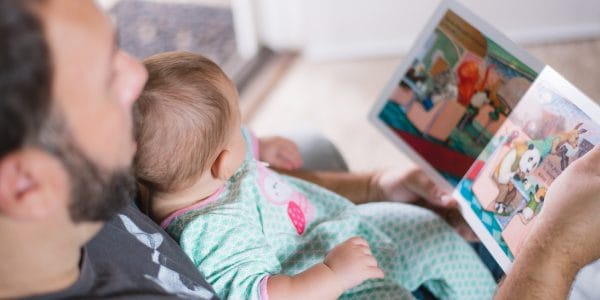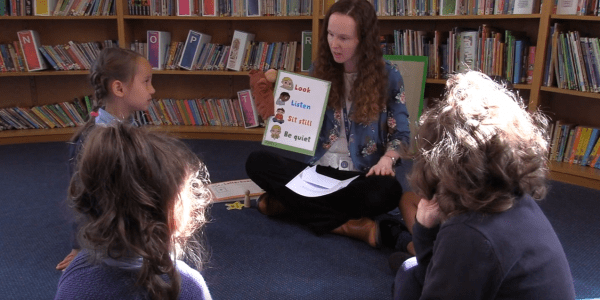
09/12/21
5 min read
Progress in improving the health of children under five has stalled in the last five years and across some measures – particularly infant mortality and obesity – children’s health is getting worse.
These trends are examined in our new evidence review, which draws on research funded by the Foundation and a collaboration with the Nuffield Trust. The review provides the first ever comprehensive analysis of the health of children under five over the last 20 years.
The review finds that while children under five are healthier today than 20 years ago, health inequalities between disadvantaged and advantaged children are increasing, with inequalities also evident between different regions and countries of the UK and different ethnic groups. Poverty is a significant driver of poorer health outcomes across all seven indicators reviewed and has been rising particularly steeply for families with a child under five. Increasing levels of poor parental mental health also pose a risk for children’s health and well-being.
These health inequalities are being compounded by the pandemic, which has led to a spike in rates of obesity in children under five, worsening parental and child mental health and reduced health services for children, including a drastic drop in health visiting and community paediatric services.
The review concludes that the health of young children, which is vital to the future health and well-being of adults and our society, is at a critical point. It recommends action on four fronts: a reassessment of whether young children are receiving adequate universal healthcare services, further development of integrated services that meet both the health and non-health needs of young children and their families, action to address child poverty, and research to explore how the associations between poor health and place, ethnicity, and level of deprivation intersect, compound and accumulate.
Key trends in the health of children under five in the last 20 years
- The last five years have seen small but unprecedented increases in rates of infant mortality, which increased three years in a row in England and Wales between 2015 and 2017 and in all four UK nations between 2018 and 2019. The UK’s infant mortality rate is 30% higher than the median rate across EU countries.
- Low birthweight is closely related to infant mortality and prematurity and has a significant impact on physical and cognitive development and working memory at five years old. Rates of low birthweight are higher for babies born to parents on a low income than those on higher incomes. Although this gap narrowed significantly between 2005 and 2011, it began increasing again after 2012 and by 2018, rates of low birthweight and the gap between lower and higher income families had returned close to 2005 levels.
- Until the COVID-19 pandemic, rates of obesity and overweight in four- and five-year-olds had remained broadly static since 2005 but have soared in the last year. In England, the proportion of four- and five-year-olds classified as obese increased from 9.9% in 2019/20 to 14.4% in 2020/21. Around 1 in 7 children are obese and 1 in 20 children are severely obese when they begin primary school. Obesity is associated with serious adverse health outcomes both in childhood and into adulthood, including type 2 diabetes, heart disease and certain cancers.
- While data has not historically been collected on young children’s mental health, parental mental health has worsened over time, which in some cases can negatively affect young children, including their own mental health. Perinatal mental health problems affect up to 20% of mothers, only about half of whom are identified and even fewer receive adequate treatment. In England, an estimated 11.5% of children under five live in a household with a parent suffering from a severe mental health problem.
- Vaccination uptake rates have increased in the last 20 years but have been falling since 2014. Uptake rates for the 6-in-1 vaccine for one-year-olds are highest in Scotland (96.1%), followed by Wales (95.8%), Northern Ireland (94.4%) and England (92.6%). Only Scotland and Wales meet the 95% coverage recommended by the World Health Organisation for herd immunity.
- There have been improvements in the proportion of mothers who breastfeed immediately after birth, but rates for those who continue to breastfeed exclusively remain far below recommended levels and are amongst the lowest in high income countries. In Scotland, there have been marked improvements in breastfeeding rates, particularly in the proportion of mothers doing any breastfeeding at six months, which rose from 32% in 2010 to 43% in 2017.
- There have been significant declines in dental decay in young children over the last 20 years but the pace of improvement has slowed since 2014/15. Poor oral health in young children can cause pain, loss of sleep, and affect school attendance and educational attainment.
- There is some evidence to suggest young children’s respiratory health is worsening – recent research found that three of the top five reasons for admissions for young children in England were for respiratory conditions
Inequalities between socio-economic group, region and ethnicity
- Infant mortality rates are higher for disadvantaged families and inequalities are growing. Between 2015 and 2017 the infant mortality rate in the most deprived areas of England was almost double the rate of those living in the least deprived areas (6.0 compared to 3.1 deaths per 1,000 live births).
- Rates of infant mortality vary between ethnic groups. In 2017, the infant mortality rate for babies from a Pakistani background was 7.3 deaths per 1,000 live births compared to 3.2 for babies from a White British background. Although there has been a significant fall in the infant mortality rate in babies from Pakistani and Black-Caribbean backgrounds in the last decade.
- In 2020/21, 20% of young children aged four and five living in the most deprived areas were obese, compared with 8% of children in the least deprived areas.
- 6% of two- to four-year-olds may have a mental health disorder, which are moreprevalent among children whose parents are in receipt of welfare benefits or on a low income, or who have parent(s) with a mental health disorder. Mental health disorders are more common in boys of White ethnic backgrounds (8%) than those of Black or other minority ethnic backgrounds (3%). However, rates of mental health disorders are similar among girls, regardless of ethnicity.
- There is considerable regional variation in MMR vaccination uptake rates in England, with rates in London considerably lower than the national average. In 2019/20 only 77% of children in London had received their MMR vaccine by their fifth birthday, compared to the average across England of 87%. Rates are highest in the North East (92%) and South West of England (92%).
- Rates of breastfeeding vary according to maternal age, ethnicity and level of deprivation. Older mothers are more likely to breastfeed. White women are less likely to breastfeed than women from ethnic minority backgrounds, although White women from ethnically diverse areas are more likely to breastfeed than White women in less ethnically diverse areas.
Across some indicators of health – such as rates of breastfeeding and oral health of the under-fives – progress over the last 20 years has been maintained, largely as a result of targeted national programmes. The Scottish national infant feeding strategy has led to increased rates of breastfeeding. Sure Start led to major health benefits for children from more deprived neighbourhoods. National oral health programmes in Scotland and Wales have accelerated rates of improvement in children’s oral health. The success of these interventions demonstrates that improvements in young children’s health are possible with sustained policy effort.
Carey Oppenheim, Early Childhood Lead at the Nuffield Foundation said: “It is very worrying that after two decades of improvement in young children’s health, progress on some key indicators has stalled or gone into reverse. Our evidence shows that targeted interventions and integrated services can make a positive difference in specific areas of children’s health but the worsening picture on infant mortality, low birthweight and obesity is a major concern, with long term consequences for health and well-being into adulthood. There is such a clear link to levels of poverty and deprivation that action to tackle child poverty also needs to be a policy priority if substantial progress is to be made.”
Dr Dougal Hargreaves, Reader in Paediatrics & Population Health, Imperial College London and co-author of the review said: “The concerning trends we present in this report reflect a failure to put the needs of babies and young children first. Greater investment in the early years is key to the government aims of achieving a healthier, fairer, more highly-skilled and productive society. While it’s encouraging to see this recognised in recent government policies, it’s essential that resources match the scale of the problems we face.”
View publication

























































